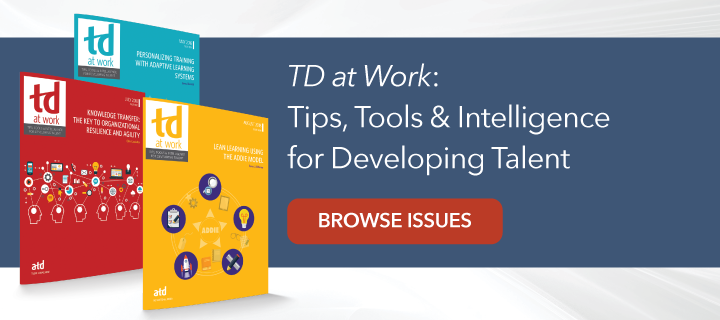Is this the right match, and am I sharing what I need to?
Bringing on an outside consultant for an L&D project can be a win-win: The internal L&D team gains access to talent they may not have locally for the duration of the project, and the external L&D consultant is able to offer their specific skill set in a manner that works well for them. For these projects to succeed, however, both the L&D manager and consultant must understand what the other stakeholder needs and expects, communicate effectively, and have access to what they need to complete the project.
In “The L&D Consultant’s Project Life Cycle,” Amanda Van Der Heiden provides guidance on how to work with your corresponding L&D expert—the manager if you’re the external consultant, and the consultant if you’re the internal manager. She does so by outlining a framework for L&D projects: pre-project, project, and post-project.
Pre-Project
The pre-project phase includes contracting and onboarding.During contracting, details are ironed out about what needs to be done, by whom, and in what timeframe. Among the issues that need to be addressed are the budget, the specific project scope, and the final arbiter when questions arise. In addition to those nuts and bolts, Van Der Heiden stresses that it’s important to get the right people in the right seats—not only are skill sets important, but so are personalities and communication preferences and styles.
Fleshing out the practical details, the manager should think about whether they can do what is expected with the budget and resources available to them. Meanwhile, it is critical for the consultant to understand their worth and whether taking on the project makes sense for them now and in the long term.
Onboarding entails bringing the contractor or vendor onto the team. The L&D manager must ensure that other members of the internal team are prepared to work with the consultant—have they made time on their calendars, for example, to meet with the consultant as appropriate? Will the L&D consultant have an internal email address and access to company files? If not, how will they communicate and share documents? Are there acronyms and other company vernacular that the consultant needs to know?
Project
How often will the consultant provide updates to the L&D manager? In what format? What happens if a project expands beyond the initial scope? Do the manager and consultant have the same clear understanding of what project success looks like?These are among the considerations during the project phase. A key issue will be the interpersonal dynamic, which hopefully both the consultant and L&D manager gave thought to ahead of taking on the project.
Post-Project
With the deliverable accomplished, the manager and consultant can say goodbye, correct? Not so fast.A debriefing session that includes all stakeholders and reviews lessons learned and what to emulate in the future can lead to greater success on the next project. Even though the relationship between external and internal team members may feel somewhat formal, remember that you’re still working with other humans. It’s important to celebrate success. People want to hear “thank you.” Keep in touch if the contract allows.
And if you’ve had success, including interpersonally, look for opportunities to work together in the future. Or share leads with others who may have skills or work that suits the other half of your now-triumphant L&D partnership.




